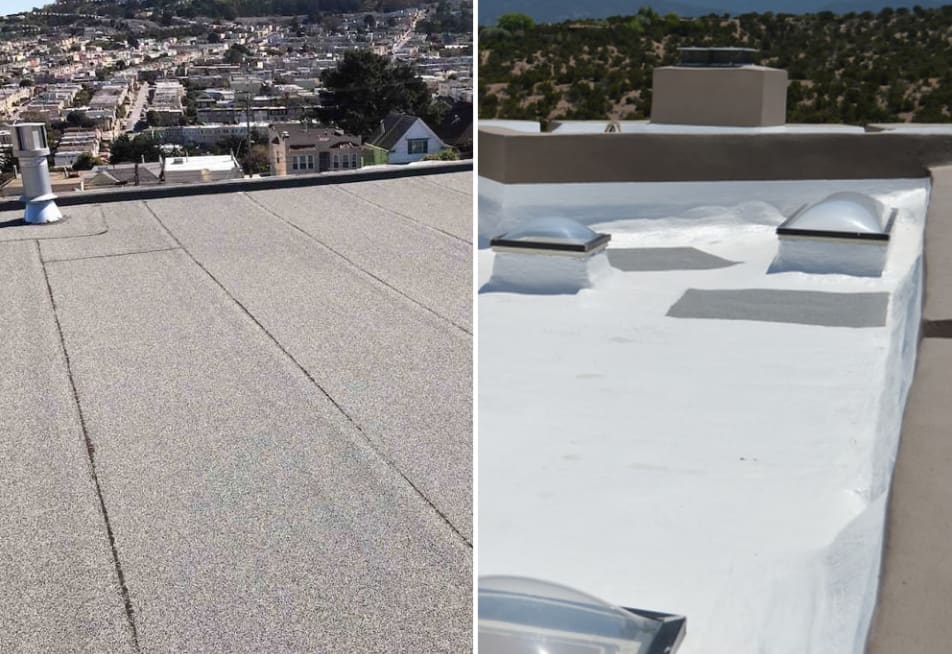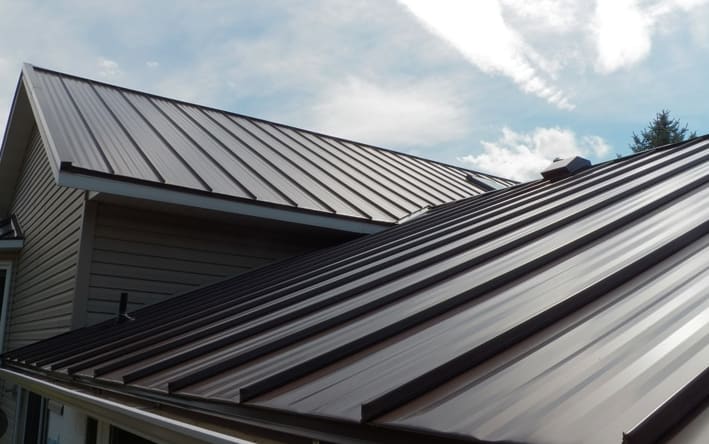Solar Panel Sizing and Design
The amount of solar Tesla recommends for your home is based on several factors, including your roof size and your average monthly electric bill. You can see your recommended system size for your home by following these steps:
- Enter your address and monthly electricity cost online.
- View the number of Powerwalls that Tesla recommends.
- View the system size recommended for your home. You can increase or decrease your preferred system size.
Roof Eligibility
Knowing your roof type will help our team know which of our solar products – solar panels or Solar Roof – makes sense for your home. If you prefer Tesla solar panels, your roof type will also help us determine which of our low-profile mounting systems to use. If your roof material falls under one of the qualified types below, we will have the appropriate mounting system to proceed with your solar panels project.
| Roof Type | Example | Solar Panels | Solar Roof |
|---|---|---|---|
|
3-tab asphalt or composition shingles: 3-tab composition shingle is one of the most common roof types and varies in shape and color. |

|
✓ | ✓1 |
|
Dimensional or architectural asphalt or composition shingle: Dimensional or architectural composition shingles are thicker with elements to enhance a perception of depth. |

|
✓ | ✓1 |
|
Concrete tile: Concrete tile can be flat or curved in shape, such as clay tile. While similar in appearance, concrete tile is different from clay tile. |

|
Minimum 6.5 lbs per square foot tile weight required | ✓1 |
|
Flat roof2 – rolled asphalt, torchdown or foam: Flat roofs are not qualified for Solar Roof and may be compatible with solar panels depending on local building code. Rolled asphalt or Torchdown roofing resembles composition shingle and is installed in long rolls. Foam is often white or light in color. |

|
✓2 | |
| Standing seam metal: Tesla uses a proprietary clamping mounting system to install on standing seam metal roofs. |

|
✓2 | ✓ |
|
Other roof types: There are a variety of additional roof types that do not accommodate our solar panel mounting systems. These roof types are ideal for upgrading to Solar Roof. |
Other metal Slate  Wood shake  Clay tile 
|
Minimum 6.5 lbs per square foot tile weight required | ✓1 |
Layout For Efficiency and Looks
Tesla uses a combination of high-resolution aerial and satellite imagery to design your solar system. Our designers will place the solar panels for highest production and arrange them for best aesthetics. When you are presented with your design, you can provide your preferences through the Interactive Layout Experience or by scheduling a consultation with your Project Advisor.
Optimizing Solar Production
Roof Orientation, Obstructions and Shading
Your solar system is designed for maximum production, meeting at least 25% TSRF (Total Solar Resource Fraction). We avoid placing panels near obstructions such as trees or other structures that may block the path of the sun. Each solar panel should be exposed to sunlight to produce the most electricity.
In the northern hemisphere, it’s best to have your panels on a south mounting plane if available. Roof planes must be able to accommodate a minimum of two panels to be considered in your final design.
Roof Pitch
The slope of your roof can affect your solar energy output. The ideal roof slope is 15-45 degrees. Anything beyond 45 degrees makes installation difficult and limits your solar energy production. Solar panels on flat roofs will be put on a rail system which allows us to angle solar panels toward the sun.
Adding More Solar Over Time
An additional solar system can be added if you would like to add more panels in the future. Rather than adding panels to your current system, it’s best to keep them independent. This allows each system to operate efficiently and maintain its respective warranties.
Frequently Asked Questions
How many solar panels do I need?
Choosing the right solar system size for you depends on a few things – where your house is located, how much electricity your home uses per year and the local price of electricity from your utility. Before you order, Tesla will show you the system size that is expected to save you the most money based on your input. You may decide to choose a different size if you expect your electricity usage to change.
Why does the biggest system not have the largest savings?
There may be days throughout the year where you consume more energy than your solar system produces, and days where you consume less. Many electric utilities add up all the excess energy that you generate during the year, and subtract it from your total energy consumption during that year. You only have to pay the difference. This is called net metering.
Some utilities will not give you full credit for generating electricity beyond what you consumed that year. Therefore, to maximize your savings, you want to base your system size on your expected electricity usage, without generating a lot of net excess over the year that you can’t use.
Our recommended system size on your order is based on offsetting your current energy usage, determined by the average electric bill that you enter. If you plan to add an electric vehicle or other electric appliances in the future, you may want to consider getting a larger system size.
1 Can only be installed as a new roof to replace your roof
2 Regional restrictions may apply.